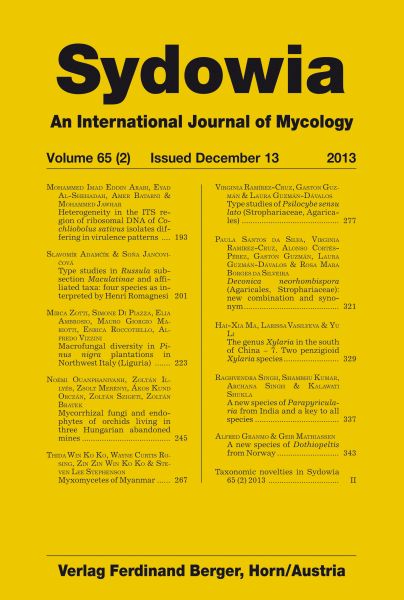
Sydowia Vol. 65/2 E-Book/S 245-266
Mycorrhizal fungi and endophytes of orchids living in three Hungar
Download-Artikel
Artikel Nr 2504
Preis 16,50 €
Lieferstatus 

Buchbeschreibung
Ouanphanivanh N., Illyés Z., Orczán Á. K., Szigeti Z., Bratek Z. (2013) Mycorrhizal fungi and endophytes of orchids living in three Hungarian abandoned mines. – Sydowia 65 (2): 245–266.Several ascomycetous and basidiomycetous fungal genera have been identified from the roots of orchids, with which they might have a mycorrhizal relationship. This study investigates the fungal partners of orchids living in Hungarian abandoned mines. Individuals of one to three orchid species were collected in three Hungarian abandoned mines (Pusztavám, Tokodaltáró, Székesfehérvár). DNA was extracted from isolated fungal strains or directly from surface-sterilised orchid roots. The nuclear ribosomal internal transcribed spacer (ITS) region of fungal DNA was amplified in a polymerase chain reaction (PCR). Sequenced ITS regions were identified based on the most similar sequences in the GenBank nucleotide database (National Center for Biotechnology Information, NCBI). Besides fungal genera considered to be orchid symbionts (Epulorhiza spp., Ceratobasidium spp. and Sebacina spp.), sequences similar to Coprinopsis atramentaria, Fusarium strains, dark septate endophytes and a member of Pezizales were found. This is the first time that C. atramentaria has been found in the roots of photosynthesising orchids. The fungal clade Epulorhiza 2 might contain disturbance-tolerant fungi. The fungal specificity of Orchis militaris seems to be lower than previously assumed.
Keywords: disturbed habitat, Epulorhiza, orchid mycorrhiza, specificity.





